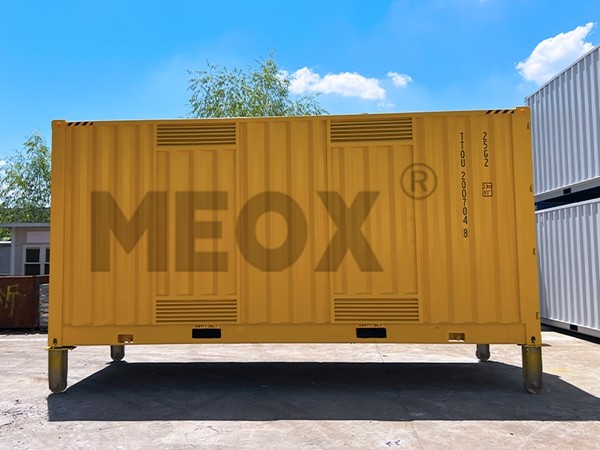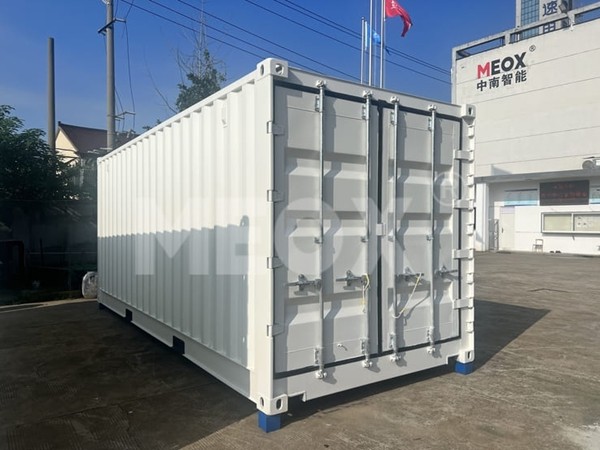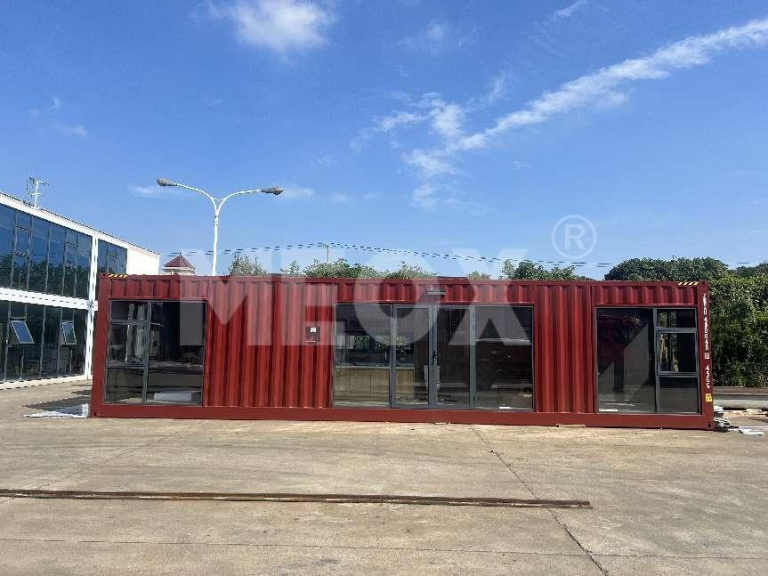Why are Hazardous Material Containers Critical?
Hazardous material Containers play a vital role in ensuring safety, regulatory compliance, and environmental protection. In many industries, hazardous waste containers and hazmat storage containers are indispensable. These containers secure dangerous substances while minimizing risks of fire, leaks, and chemical spills. Regulatory standards such as OSHA and NFPA guide their design and use.
Industry reports indicate a growing global market for hazardous material shipping container solutions. This trend reflects the increasing demand for safe and efficient transport systems. Data also shows that proper storage of hazardous materials can protect workers and the surrounding environment. The use of a certified DG container minimizes potential hazards and limits exposure to flammable fuels, corrosive chemicals, and toxic substances.
Each hazardous material container is built to store a wide range of substances. The product line includes bulk packaging hazmat units as well as specialized hazmat containers for oxidising agents and compressed gases. Types of hazardous materials must be identified. Hazardous storage containers help maintain code compliance and improve operational productivity.
Regular inspections of hazardous waste storage containers ensure ongoing safety. Both the storage system and the shipping container must adhere to international safety codes. The selection of the right container is essential. Robust hazardous waste container solutions keep environments secure and operations efficient.

What are Hazardous Material Containers?
A hazardous material container is a specialized shipping container designed for safe transport and storage of hazardous substances. This container features a bunded floor that catches spills and prevents leaks. It has an inbuilt ventilation system to disperse vapors and fumes. The container is lockable to ensure security. You can use a hazardous waste container to manage dangerous chemicals and liquids effectively.
The container is ISO certified. This certification allows it to be transported by ship, truck, or rail. The design meets the standards of hazardous material shipping container regulations. You are encouraged to consider a dg container for optimal safety during transport.
A hazmat container like this is built for various applications. It is used in warehouses, construction sites, manufacturing facilities, and workplaces. Hazmat storage containers protect workers and the environment. The design supports bulk packaging hazmat requirements. Each container safely stores types of hazardous materials under strict regulatory guidelines.
The safety features are vital for preventing chemical spills and environmental damage. Choosing the right hazardous material container is essential for your safe operations.
9 Types of Hazardous Materials and Management Points
(1) Explosives: Explosives are substances or items that can undergo intense chemical reactions under external influences, such as heat or impact. They rapidly produce large amounts of gas or heat and trigger an explosion. Examples include gunpowder, dynamite, fireworks, etc.
Risk: Explosives have enormous destructive power. They may cause casualties, equipment damage, and environmental pollution.
Management Points:
Strictly isolate them from fire sources, static electricity, and high-temperature environments.
Use an explosion-proof Hazardous Material Container during transport and follow the “Road Transport Rules for Explosives.”
(2) Compressed and Liquefied Gases: These are gases stored under pressure or in a liquefied state. They include flammable gases (like liquefied petroleum gas), non-flammable, non-toxic gases (like oxygen), and toxic gases (like chlorine).
Risk: Containers can explode when heated or impacted. Leakage may lead to suffocation or poisoning.
Management Points:
Regularly inspect the containers for pressure resistance.
Secure the Hazardous Material Container with anti-tip devices during transportation to avoid vigorous shaking.
(3) Flammable Liquids: Flammable liquids have a flash point of 61°C or below. Examples include gasoline, ethanol, and acetone. Their vapors can mix with air and form explosive mixtures.
Risk: The vapors may ignite when exposed to open flames or static electricity, causing fires or explosions.
Management Points:
Store them in cool, well-ventilated areas and use explosion-proof electrical equipment.
Label transport vehicles with “flammable liquid” and equip them with leakage emergency kits.
(4)Flammable Solids: Self-reactive Substances, and Substances. Those that Are Easily Ignited by Moisture
Flammable solids, such as sulfur or magnesium powder, catch fire easily from heat or friction.
Self-reactive Substances, like white phosphorus, can spontaneously oxidize and burn at room temperature.
Substances Easily Ignited by Moisture, such as sodium metal, release combustible gases when contacting water.
Risk: These materials burn quickly and may release toxic gases.
Management Points:
Store them separately and never mix them with oxidizers or acids.
Seal moisture-sensitive substances to prevent exposure.
(5)Oxidizers and Organic Peroxides: These substances have strong oxidizing properties that can cause other materials to burn or explode. Examples include potassium permanganate and hydrogen peroxide.
Risk: They may spontaneously ignite or explode when mixed with organic materials.
Management Points:
Keep them strictly separate from reducing agents.
Store organic peroxides at low temperatures and avoid friction or direct light.
(6) Toxic and Infectious Substances: Toxic and infectious substances can cause poisoning through inhalation, skin contact, or ingestion. These include pesticides, cyanides, and viral samples.
Risk: Even small amounts can lead to acute or chronic poisoning.
Management Points:
Wear protective gear such as gas masks and protective clothing when handling.
In case of leakage, immediately isolate the area and use absorbent materials for cleanup.
(7) Radioactive Materials: Radioactive materials are substances that emit radiation spontaneously, for instance, uranium or medical isotopes.
Risk: Long-term exposure may cause cellular damage or cancer.
Management Points:
Store them in lead-lined containers and monitor radiation levels regularly.
Obtain a “Radioactive Materials Transportation License” when transporting them.
(8) Corrosives: Corrosive substances are acids or bases that can cause severe skin burns and corrode metals, such as sulfuric acid or sodium hydroxide.
Risk: Direct contact may result in chemical burns. Leaks can lead to environmental pollution.
Management Points:
Use a corrosion-resistant Hazardous Material Container for storage.
Wear appropriate protective equipment, such as goggles and rubber gloves, during handling.
(9) Miscellaneous Hazardous Materials: These are hazardous substances that do not fit into the first eight categories. Examples include lithium batteries, magnetic materials, and marine pollutants.
Risk: Their unique properties may result in unforeseen hazards. For instance, lithium batteries may short-circuit and catch fire.
Management Points:
Develop management plans based on each material’s specific characteristics.
Ensure that the transportation of lithium batteries meets UN38.3 testing standards.
Core Principles of Hazardous Chemical Safety Management:
- Classification and Labeling: Strictly use GHS labels according to the nine categories. This ensures traceability.
- Risk Assessment: Regularly assess risks during storage, transport, and usage. Prepare emergency response plans accordingly.
- Personnel Training: Conduct regular safety training and emergency drills for all staff.
- Compliance Review: Follow the “Catalogue of Hazardous Chemicals” and comply with local regulations to avoid legal risks.

Key Features of High-Performance Hazmat Containers
1. Double Side Door Hazardous Material Container: Serves as an excellent hazardous storage container and hazardous waste container
- Provides flexible storage with access from both sides.
- Designed for chemical classes 3, 4.1, 4.3, 5.1, 6.1, and 8 (subject to MSDS compliance).
- Equipped with a bonded floor that captures spills.
- Includes multiple top and bottom vents for good air circulation.
- Features a 316L safety drain valve for extra safety.
2. Side Opening Hazardous Material Container: Ideal as a cost-effective DG container in bulk packaging hazmat operations and as a reliable hazmat storage container for long-term storage.
- Built for safe storage and easy access with heavy-duty side opening doors.
- Constructed from durable, powder-coated steel.
- Fitted with ISO locking bars for high security.
- Equipped with forklift pockets that improve handling and mobility.
- Designed with a bunded spillage sump and baffled spill containment features.
- Certified for a 12T lifting capacity and compliant with AS1940-2017.
3. Hazardous Material Container with Storage Module – Single Level Adjustable Mid Rack: Functions as both a hazardous material shipping container and a reliable hazardous waste storage container.
- Integrates a storage module into a 20ft hazardous material container.
- Offers a single-level adjustable mid rack for enhanced organization.
- Provides double-depth mesh shelving that is rated to 1250kg per bay.
- Maximizes storage density for chemical containers, drums, and IBCs.
4. Hazardous Material Container with Storage Module – Perimeter Racking, 4 Levels: Meets industry standards and functions as both a hazardous storage container and a hazardous material container.
- Designed for users who require extra storage capacity.
- Features adjustable perimeter racking across four levels.
- Provides a racking system adjustable in 50mm increments, offering 33.6 lineal meters of shelving.
- Each shelf can support up to 970kg.
- Improves organization and efficiency when storing chemicals outdoors.
Custom Dimensions and Configurations
Need something custom-built? Call to discuss your requirements. MEOX offers containers of various sizes that allow you to store different types of hazardous materials efficiently. These choices enable you to customize your hazmat storage containers to match your site layout. These customizable dimensions can support your inventory management with ease.





